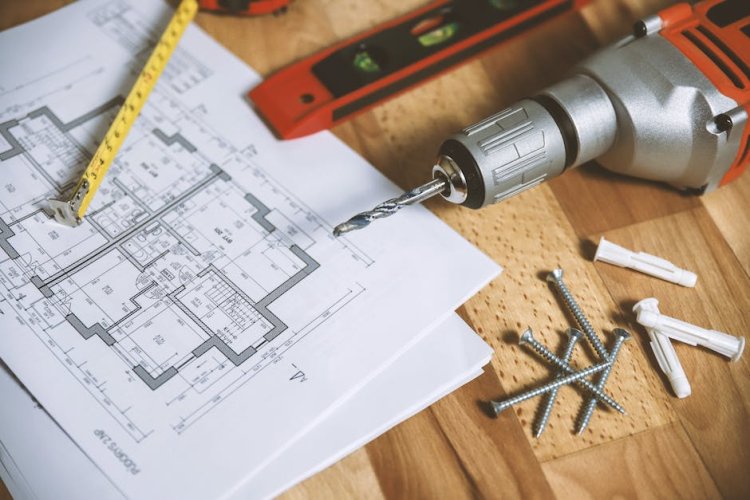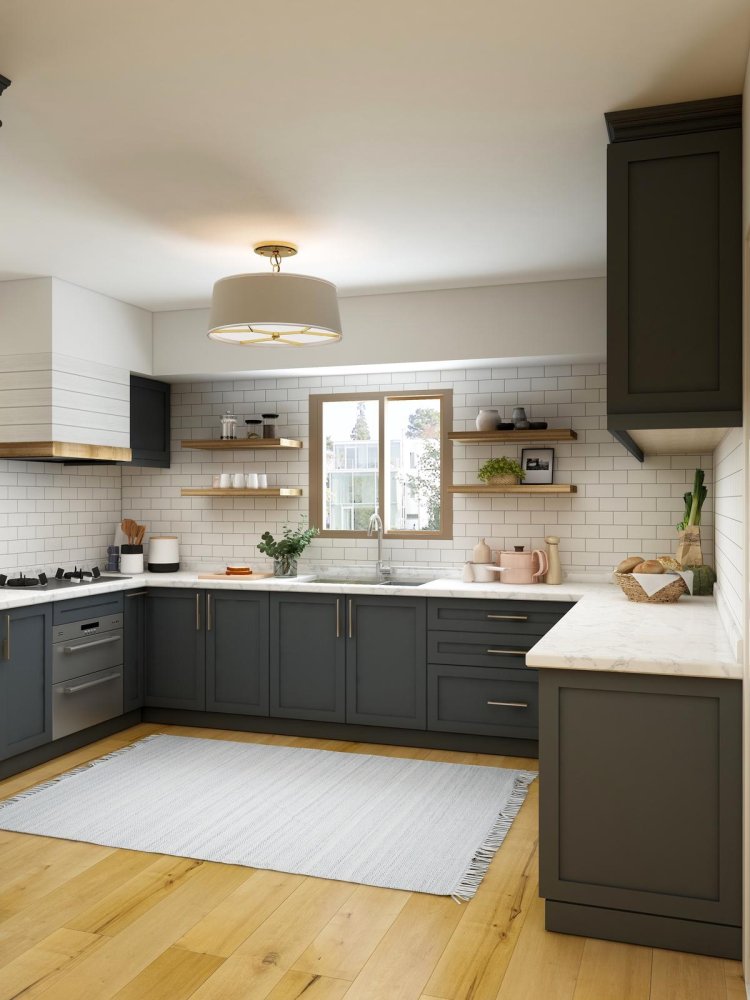Ultimate Guide to Vastu Compliant House Floor Plans
Discover the ultimate guide to Vastu compliant house floor plans and learn how to create a harmonious living space that aligns with Vastu principles.
Ultimate Guide to Vastu Compliant House Floor Plans
Harmonizing the energy of a space to evoke positivity, prosperity, and wellbeing is an ancient art rooted in the Indian science of architecture. This art, known as Vastu Shastra, holds the key to designing spaces that align with nature and cosmic principles. In this comprehensive guide, you will discover the principles of Vastu Shastra, and how these principles can be applied to house floor plans to convert your home into a haven of positivity and abundance. Understanding and implementing these principles could transform your living space and give you a sense of tranquility and harmony, creating a positive difference in your day-to-day experiences at home.
Understanding Vastu Shastra
Understanding Vastu Shastra: Going Back to the Roots
Vastu Shastra, an ancient Indian science of architecture, is profoundly rooted in the spiritual and philosophical beliefs of Hindu culture. As per Vastu principles, the design, layout, and arrangement of a structure can significantly influence the wellbeing, prosperity, and happiness of the inhabitants. This intriguing blend of architecture, astronomy, and philosophy brings together science and spirituality to create an atmosphere of harmony, balance, and positivity.
Significance of Direction as per Vastu
The importance of direction ranks high in the principles of Vastu Shastra. It is traditionally believed that each cardinal direction is regulated by a specific deity and carries unique energies that can affect various aspects of human life. For instance, the east, under the guardianship of the solar deity, is connected to prosperity and enlightenment and is often recommended for entrances. The north, ruled by the god of wealth, Kuber, is associated with prosperity and is ideal for treasury or storage spaces.
The Fundamental Five Elements
The classic five elements or "Panchabhootas" - earth, water, air, fire, and space - form a quintessential part of Vastu Shastra. Each carry unique energies and influence distinct aspects of living. Earth or "Bhumi" associated with stability and immunity influences the southwest direction. Water, or "Jal", symbolizing flow and continuity, governs the northeast. Fire, or "Agni", representing transformation and passion, rules the southeast. Air or "Vayu", associated with movement and growth, governs the northwest. Lastly, Space or "Akash", linked with expansion and creativity, covers the central areas of a plan.
Vastu Compliant House Floor Plans
Keeping in mind the principles and elements of Vastu Shastra, various factors should be considered while planning a house floor layout. For instance, the house should ideally face north or east, the kitchen positioned in the southeast direction, and bedrooms in the south or southwest, keeping the central areas clear to allow free movement and energy flow. Also, adequate provisions for natural light and ventilation, using Vastu-recommended shapes and avoiding irregular shapes for rooms can align a structure with the Vastu principles.
The Relationship between Vastu and House Construction
The interplay between Vastu Shastra and house construction is fundamental. From the time when the plot of land is selected until the final brick is laid in place, Vastu compliance can dictate every aspect of the construction process. Through Vastu Shastra, it is believed that by harmonizing elements of nature and architecture, houses can channel positive energies, promote health, wealth, and overall happiness.
Importance of a Vastu compliant House Floor Plan
A Vastu-compliant house floor plan aims to integrate the fundamental principles of Vastu Shastra with modern architecture. In doing so, it allows the inhabitants of the house to live in coherence with nature, with the elements themselves working together to foster a sense of well-being and positivity. Vastu compliant house floor plan is all about creating a symbiotic relationship between man and nature, employing a distinct combination of science, art, and philosophy.
Pillars of Vastu compliant House Floor Plan
Vastu compliant house floor plans typically abide by some critical components: the right direction, appropriate room placement, and the right balance of the five elements. Achieving the perfect harmony among these factors can unlock an aura of positivity and prosperity. Furthermore, attention is given to shapes, colors, and even the type of objects placed in rooms, as they are believed to impact the energy within the space.
Application: An Existing House’s Transformation
Modifying existing house floor plans to align with Vastu principles can involve structural alterations or reorganization of the indoor spaces. Mirrors, crystals, plants, colors, and symbols can also be used to correct Vastu imbalances in a space. It's a tangible way to invite positive energy, tranquility, and a sense of balance into the dwelling.
In essence, Vastu Shastra advocates for an intimate comprehension and respect for the impact of natural elements on human life. By discerning and implementing the wisdom this intuitive science offers, one can establish a home that is a beacon of tranquility, positivity, abundance, harmony, and holistic wellbeing.

Significance of Vastu Compliant House Floor Plans
Digging deeper into Vastu Compliant House Floor Plans
It's crucial to recognize that Vastu compliant house floor plans play an essential role in fostering a harmonious living environment. Rooted in ancient Indian architectural science, Vastu shastra concentrates on structuring your home's layout to direct and balance cosmic energy. When appropriately applied, the principles of Vastu aim to invite positive energy into the home, thus promoting wellbeing and prosperity among its residents.
Vastu for Positive Energy and Prosperity
One of the significant benefits of Vastu compliant house floor plans is the enhancement of positivity. As per Vastu, each direction corresponds to specific characteristics or elements. When designed according to these principles, the house fosters the maximum positive energy. For instance, the north-east corner is associated with water elements and is considered ideal for a prayer room or meditation space. Roots of plants, water resources, or a living room in this direction can bring positive vibes, peace, and prosperity.
Vastu for Health
Another key benefit of having a Vastu compliant house plan is improved health. Specific planning principles focus on the best positions for different rooms and spaces, regulating the air, sun, and light entry, all of which have a profound impact on health. For example, the center or Brahmasthan of the house should be left open and free of any heavy objects or clutter. This allows for seamless energy flow and light, promoting the health and well-being of the residents.
Harmonious Living with Vastu
Vastu compliant floor plans also promote harmony among family members. The science of Vastu considers the five elements of nature - earth, air, fire, water, and space – in the design process. Aligning these five elements in the house ensures the force fields are balanced, resulting in a harmonious living environment for all occupants.
Vastu for Prosperity
The principles of Vastu aim to foster prosperity. Entrances, placement of furniture, kitchen, and even toilets are carefully planned to harness positive energy and bring prosperity. For example, having the kitchen in the southeast (the direction of the fire element) promotes good health and prosperity while the main entrance in the north or east direction brings wealth and success.
Vastu Floor Plan Guidelines
There are several key guidelines to follow when designing a Vastu compliant house floor plan. Bedrooms should generally be placed in the south, west, or southwest for calmness and reduced stress. Dining areas should be in the west direction because it's associated with the setting sun and signifies dissolution of any health issues. Bathrooms, on the other hand, should ideally be placed in the west or northwest directions to keep away negative energies.
Vastu compliant house floor plans extend beyond mere architectural styles or aesthetics. They bear a profound influence on the overall health, prosperity, and peaceful coexistence of the individuals residing in the house. Adherence to principles of Vastu can help shape an environment that is not only conducive to everyone living in the house but also significantly enriches their lives.

Key Elements of Vastu Compliant Floor Plan
Decoding Vastu: Crucial Elements of a Vastu Compliant Floor Plan:
Vastu Shastra is an age-old Indian architectural science that provides guidelines for the spatial organization of various elements within a house to allow for the uninhibited flow of positive energy. Implementing these principles within any house floor plan converts the house into a hub of harmony and contentment.
A cardinal rule in Vastu compliant floor planning is the judicious placement of rooms. The careful alignment of various rooms with the cardinal directions channels positive cosmic energies, promoting well-being. Elaborating on this principle, the master bedroom is best positioned in the southwest direction to induce stability and contentment in the senior inhabitants of the house. On a similar note, rooms for children are ideally located towards the north or east direction, fostering their health and scholastic achievements.
A significant part of the house, such as the kitchen, should be oriented towards the southeast direction, tapping into the fire element. Likewise, the bathroom and toilet should either occupy the northwest or alternatively, the southeast direction. As per Vastu, these orientations contribute to financial security, robust health, and peace within the household.
The orientation of doors and windows also holds vital importance in Vastu principles. The primary entrance, also referred to as the 'Simha Dwara' or Lion Door, should preferably be north, east or northeast facing- directions that are believed to channel prosperity and positivity. Moreover, the placement of doors shouldn't be in the corners of the rooms and ideally, the total count of doors and windows should be an even number.
Vastu also recommends specific color palettes for different rooms to establish an intended ambiance. Vibrant colors have a reputation for inviting positive energy, with certain colors more apt for specific spaces. For instance, the study room adorned in shades of green fosters focus and education. The bedroom painted blue, resonating with the water element, can create a calming environment, while the prayer room doused in yellow hues can curate spiritual energy. A living room in white prevalent simplicity, openness, and vision.
Moreover, the positioning of furniture, in harmony with Vastu principles, leaves a significant impact on the overall energy of the house. For instance, the head end of a bed towards the south cultivates sound sleep and longevity. A living room with the television facing east or north helps foster healthy relations among family members. Electrical appliances such as air conditioners or coolers positioned in the west or northwest are believed to repel negative energy.
Lastly, the nuanced use of shapes in a Vastu-compliant floorplan is an important principle. It advocates the use of square or rectangular room shapes since they are considered to bring good fortune. Circular or irregular room shapes have often been associated with the invitation of negative energy.
All things considered, to follow a Vastu-compliant floor plan implies a meticulous application of these age-old design principles. Such plans create an environment resonating with cosmic energy-infused spaces within the household that nurture well-being and prosperity. Implementing these guidelines could lay the groundwork for a harmonious and affluent living environment.

Designing a Vastu Compliant Floor Plan
Decoding Vastu Shastra and Its Significance
Vastu Shastra, a time-honored Indian architectural science, prescribes holistic strategies that assure harmony and synchronization with Mother Nature for every occupant of the building or house. It underscores a harmonized existence of human lives with the quintessential elements of nature - earth, water, fire, air, and space. The primary objective of Vastu Shastra is to instill peace, prosperity, and success in human lives.
Basic Rules for a Vastu Compliant Floor Plan
- The north or east direction is considered auspicious for the entrance of the house. Keeping the entryway unobstructed and tidy can help attract positive energy.
- South-west direction is deemed the most beneficial for the master bedroom. Children's rooms can ideally be in West or north-west direction.
- South-east or north-west corner is considered best for kitchens.
- The preferable direction for the living room is north as it invites wealth and better career opportunities.
- North-west or south-east portion of the house is optimal for constructing the bathrooms.
Take Professional Assistance for Customized Vastu Compliant Floor Plans
Relying on professionals who understand the nuances of Vastu Shastra can ensure that you have a Vastu compliant floor plan that is customized according to your needs. They are equipped with extensive knowledge and experience in designing Vastu-compliant residences from scratch or modifying existing ones in line with Vastu principles.
Vastu Tips For A Happy Living Environment
- Leave more open space in the north and east directions of the house. It is believed to attract prosperity and good health.
- Avoid clutter, as it inhibits positive energy flow, and promote plenty of natural light and air circulation.
- Keep the center of the house (Brahmasthan) empty of heavy furniture and clutter.
- Mirrors should not face the bed or the entrance door, as it’s supposed to push the positive energy away.
Making Modifications to Pre-existing Structures
Exclusively Vastu compliant structures are not always feasible, especially when remodeling existing buildings. Small tweaks and adjustments can work wonders in ensuring Vastu compliance. It could be anything from changing room functions, redesigning entrances, repositioning furniture, or simply incorporating Vastu-friendly colors and materials.
Digital Vastu Compliant Floor Plans
Digital Vastu compliant floor plans are a new-age solution that uses technology to create a holistic living environment. These digital floor plans ensure that the layout is fully compliant with Vastu principles, offering a virtual walkthrough.
The Implementation Process
The implementation process of Vastu principles begins with a thorough analysis of the existing layout and surroundings. The Vastu consultant then recommends necessary modifications to align with Vastu principles. After incorporating these suggestions, the consultant often performs a final review to ensure complete Vastu compliance.
Robert's Rule for Vastu Compliance
Robert’s Rule is a key guiding principle in Vastu that advocates that the right action at the right time brings success. By adhering to this principle in Vastu implementation, homeowners can seek to bring prosperity and happiness into their households.
Conclusion
Vastu compliant floor plans are known to subtly enrich one's living space, creating an environment drenched in prosperity, peace, and positivity. It's crucial to grasp that Vastu goes beyond mere superstition- it is all about optimizing living spaces to harmonize with universal energy. A deep understanding of Vastu principles, coupled with practical alterations to your dwelling, can significantly elevate your living experience, fostering a positive and uplifting atmosphere.
Common Mistakes and Solutions in Vastu Compliant Floor Planning
Typical Errors in Vastu-Compliant Floor Planning
The core of Vastu Shastra lies in the harmonious integration of architecture with elements of nature when mapping out homes and office spaces. Despite its proven benefits, several individuals inadvertently deviate from this ancient Indian philosophy's key tenets, leading to common errors.
One such frequent misstep lies in the placement of the main entrance to the house. Many wrongly locate the main door in the South, South-West, or South-East direction. In contrast, Vastu Shastra advocates for positioning the entrance in the North, North-East, or East direction to maximize the benefits of solar energy and positive vibrations.
Additionally, incorrect positioning of the kitchen and bathrooms is another common oversight. Ideally, the kitchen should be situated in the South-East corner, and bathrooms should never be in the North-East or South-East corners. The master bedroom, meanwhile, should occupy the South-West direction, in accordance with Vastu principles.

Solutions to Vastu Compliant Floor Planning Mistakes
Rectifying such Vastu non-compliance errors becomes essential in maintaining a harmonious living environment. Firstly, it's important to note that the location of the main entrance can significantly affect the energy within the house. If the entrance was constructed in the improper location, the use of mirrors on the exterior wall can help deflect negative energy.
When it comes to the kitchen and toilets, the issue may not be as simple to resolve, especially in pre-constructed homes. One can, however, use colors to mitigate negative effects. For example, painting the toilet walls with a light color can help cancel negative energy. Also, using ceramic tiles, granite, or natural stone can minimize the Vastu defects.
FAQs on Vastu Compliant Floor Plans
1. Can existing homes be made Vastu compliant?
Yes, even existing homes can be renovated to become Vastu compliant. This may involve repositioning furniture, changing the color scheme, or even making minor structural changes. It may not always be possible to totally align an existing home perfectly with Vastu principles, but mitigatory measures can certainly be taken to improve Vastu compliance.
2. How does Vastu affect the energy in a home?
Vastu primarily affects five elements: Earth, Water, Air, Fire, and Space. These are believed to correspond to our five senses of smell, taste, hearing, touch, and sight. Therefore, any imbalance in Vastu compliance can impact our senses and emotions, thereby impacting overall energy and vibes in a home.
3. What are the key principles to keeping in mind while designing a Vastu compliant floor plan?
Some key principles to remember include ensuring the entrance to the home is in a positive direction (North or East), locating the master bedroom in the South-West, and the kitchen in the South-East. The center of the home should preferably be left open to enable a free flow of energy.
By keeping these principles, common mistakes, and solutions in mind, one can create a floor plan that adheres to Vastu principles, promotes positivity, and ensures a harmonious living environment.

By understanding and implementing the principles of Vastu Shastra in creating a house floor plan, one can harness the positive energies of the universe to live a healthier, happier, and more prosperous life. The art and science of Vastu can play a pivotal role in designing a home that resonates with positivity.
Ensuring comprehensiveness in Vastu planning may seem a complex task, but once you comprehend the core principles and their applications, the journey becomes a lot more fulfilling. This article aimed to present you with essential knowledge and practical applications of Vastu Compliant Floor Planning to assist you on this journey. Happy planning!












